Looking for a healthy assortment of fireworks to ignite for the Fourth of July holiday? In New York, from the late 19th century until the 1930s, one needed to look no further than one of the city’s most heavily trafficked areas near City Hall.
Firecracker Lane was a short row of fireworks dealerships that sat on Park Place between Broadway and Church Street, a couple blocks away from the old Astor House and the congregants of St. Paul’s Chapel.
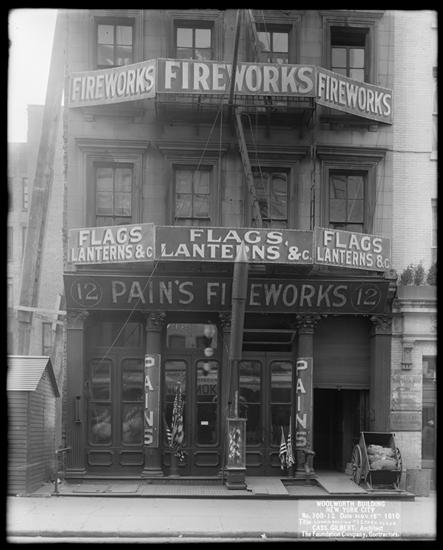
As questionable as that might sound, fireworks were actually quite common on the streets of New York in the 19th century. And Park Place was New York’s official ‘fireworks mart‘, specializing in “celebration goods,” even well into the years that its new neighbor, the Woolworth Building, towered over its shelves of fanciful explosives.
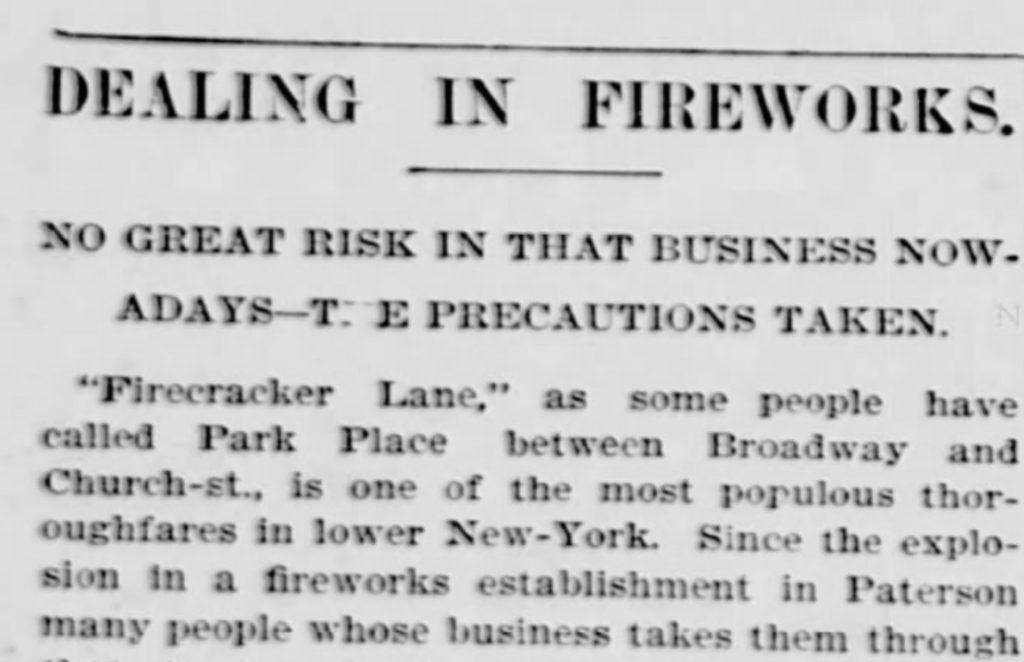
The proprietors of Firecracker Lane could attest to their shops’ safety.
“Fireworks are not made now as they were years ago and for that reason there is little danger,” said one shop owner, adding, “A fire in a fireworks store when once started will make good headway in short order, but there will be no great explosion, no blowing down of walls, nor wiping out of buildings…” What a relief!
Coincidentally, both the Great Fire of 1835 and its modest cousin the Great Explosion of 1845 both ignited many decades before just south of this area. So proprietors here made doubly sure to reassure people that such conflagrations could never happen because of their merchandise.
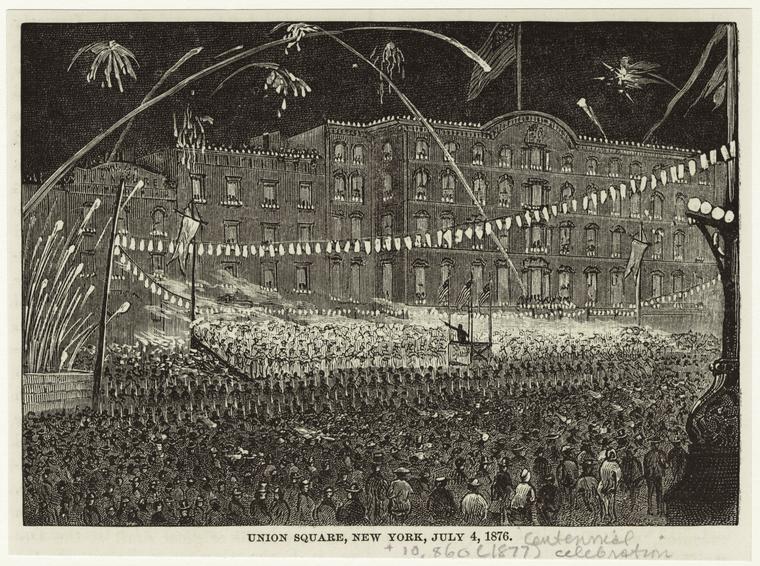
But it was another explosion that was on the minds of New Yorkers during the 4th of July 1901. Just a couple weeks before, across the water in Paterson, NJ, a fireworks factory exploded, killing 17 people who lived in the tenement above.
“So great was the force of the blast,” reported the New York Times, “that a boy playing in the street a half a block away was lifted from his feet and hurled against an iron fence, and had one of his legs broken.”
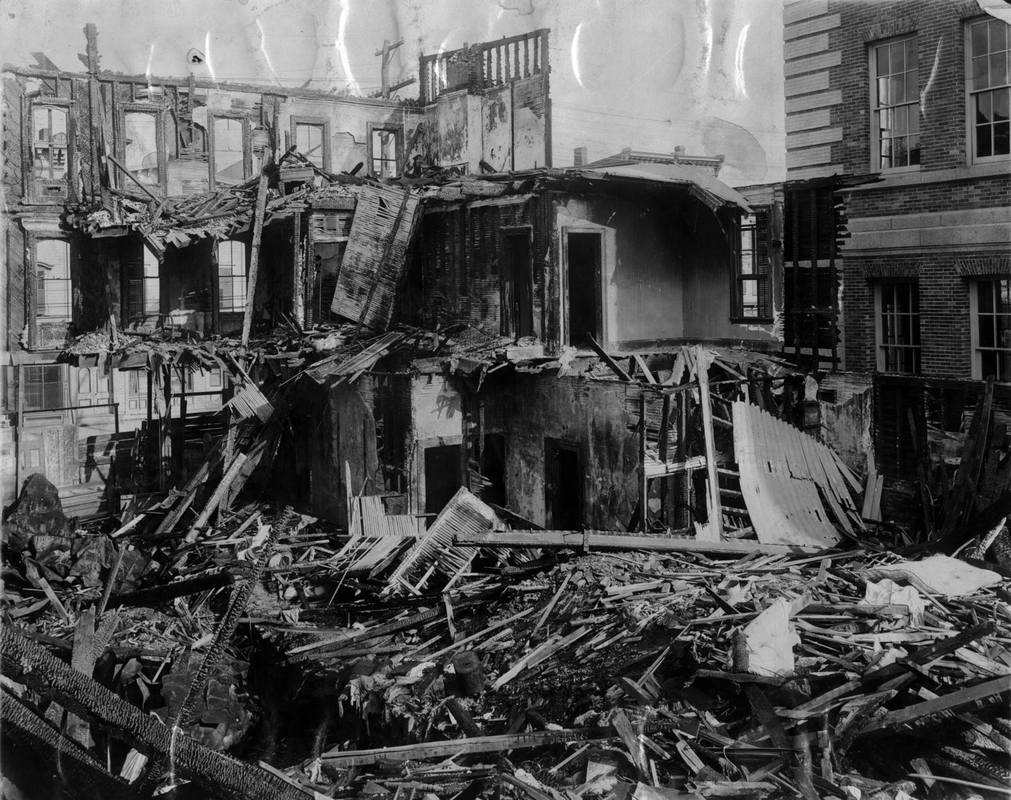
For this reason, people started avoiding Firecracker Lane, getting to the elevated train station by going the long way around, avoiding the boxes of potentially combustible merchandise stacked along the sidewalks.
Perhaps they were wise to do so. In July 1903, in front of one particular establishment, the Unexcelled Manufacturing Company, at 9 Park Place, a box ignited, showering the street with a terrifying display of rockets and smoke.
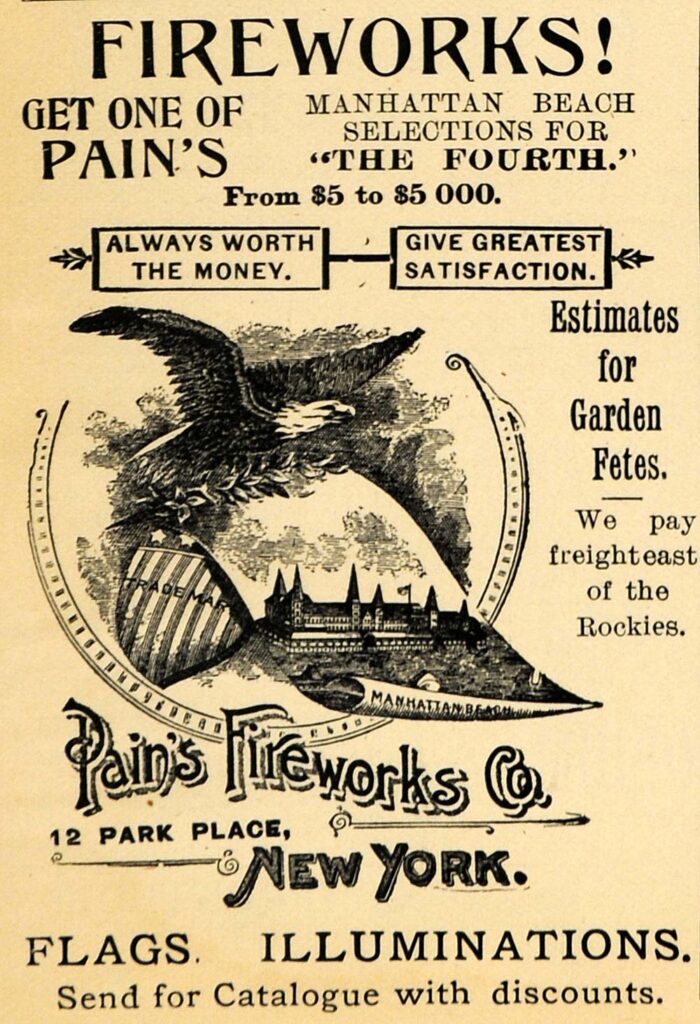
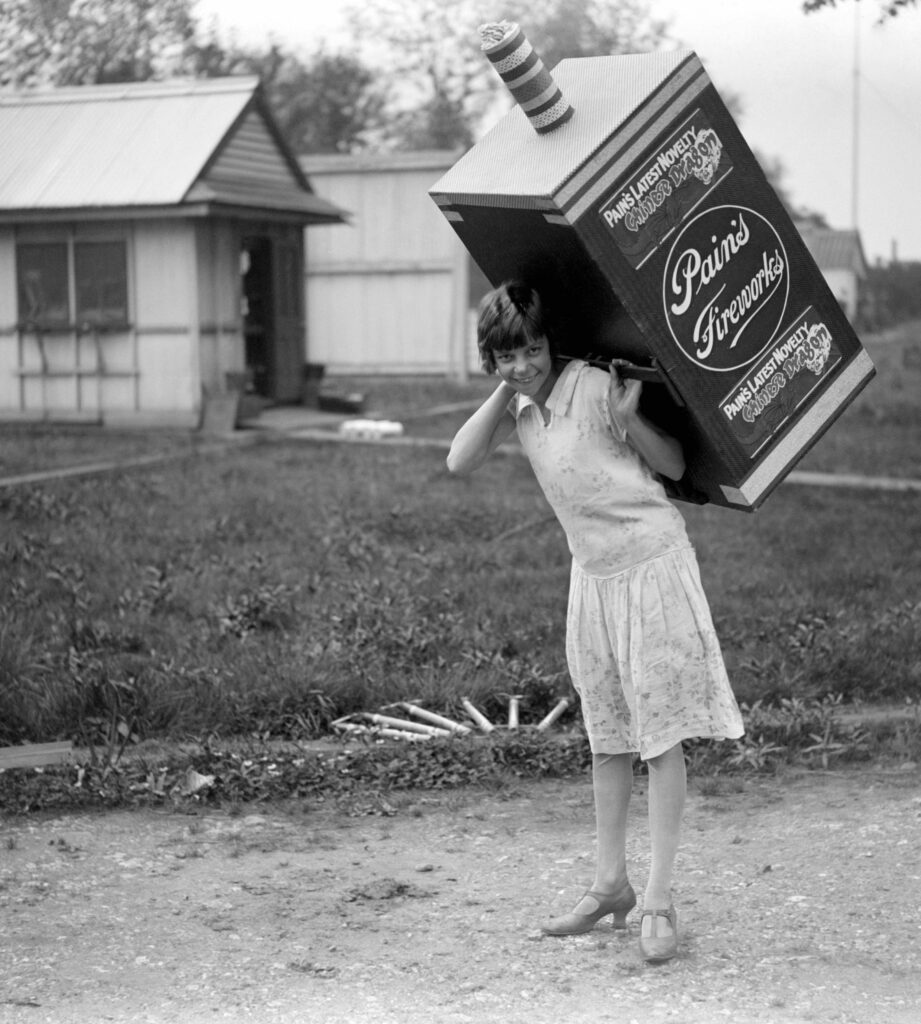
“[T]he contents, consisting of rockets, firecrackers and several small bombs, went off with a noise that almost equalled that made by Pain’s destroying of Pompeii [referencing a popular Manhattan Beach attraction].”
These Firecracker Lane establishment had larger plants in rural areas like Staten Island, but that did not minimize the danger. In 1907, the plant owned by one Park Place shop exploded in Graniteville, Staten Island, killing two children.
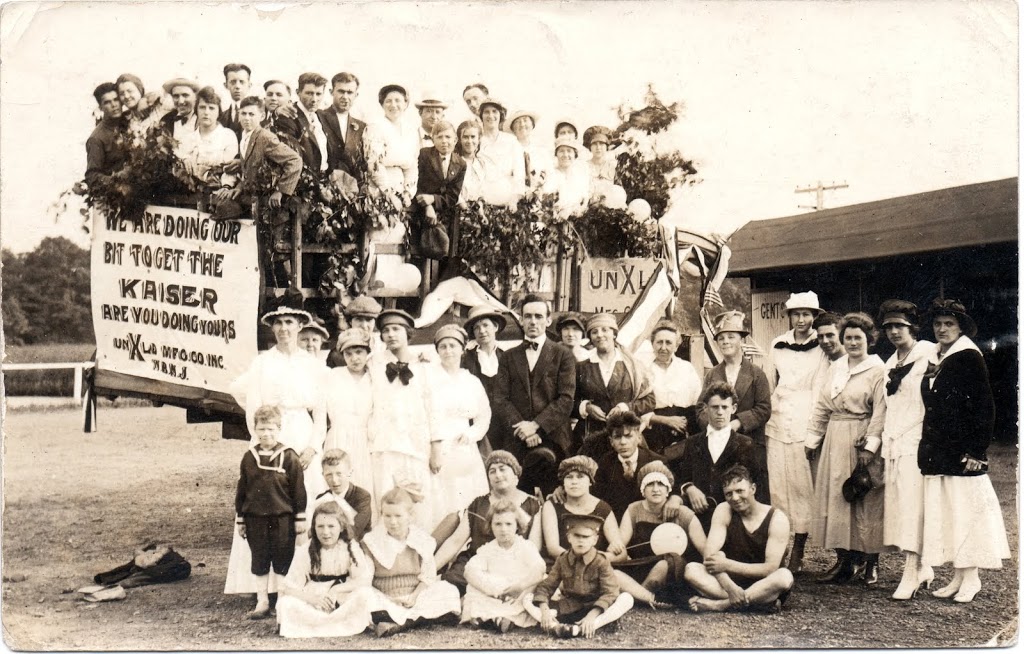
Believe it or not, you could still buy fireworks on Park Place as late as the 1930s.
However the once-bustling Firecracker Lane had been whittled down to just two shops — the Unexcelled Manufacturing Company and Pain’s Fireworks Display, owned by the very man who been responsible for the afore-mentioned Pompeii display, thirty years earlier!
By this time, the city began cracking down on the usage of fireworks, fueled by reports of hundreds of fireworks-related injuries filling city hospitals during Independence Day festivities.
The old Park Place establishments, forced to sell to an ever decreasing number of small towns where fireworks remained legal, could not withstand the scrutiny and eventually closed.
The sale and possession of fireworks were officially prohibited in the state of New York in 1940.
Who protested the loudest? The town of Graniteville, Staten Island!
By 1940, it was a leader in American fireworks production; it had even produced displays for the 1939-40 New York World’s Fair (pictured below).
But after another terrible explosion here in 1942 killed five people, the factory’s days were certainly numbered.
By 1945, the last of New York’s fireworks factory shut for good.


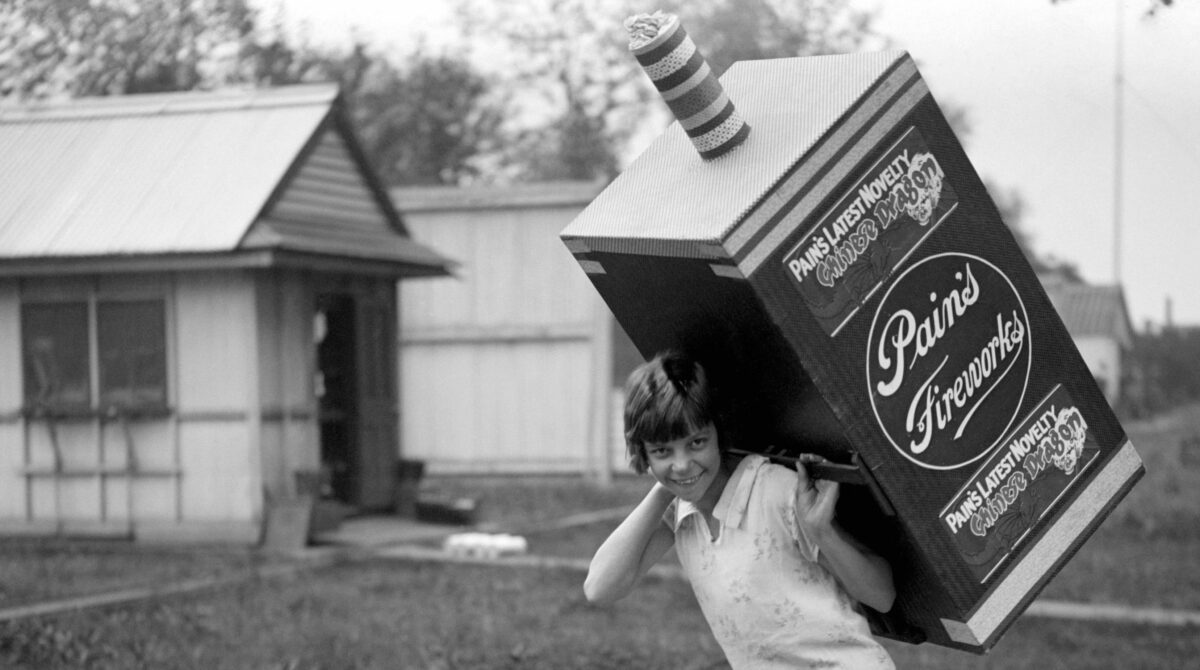
1 reply on “Firecracker Lane: New York’s explosive shopping district”
Fantastic photos! I was searching for such pictures, and I should have known to come right to you guys first! Have a great holiday.